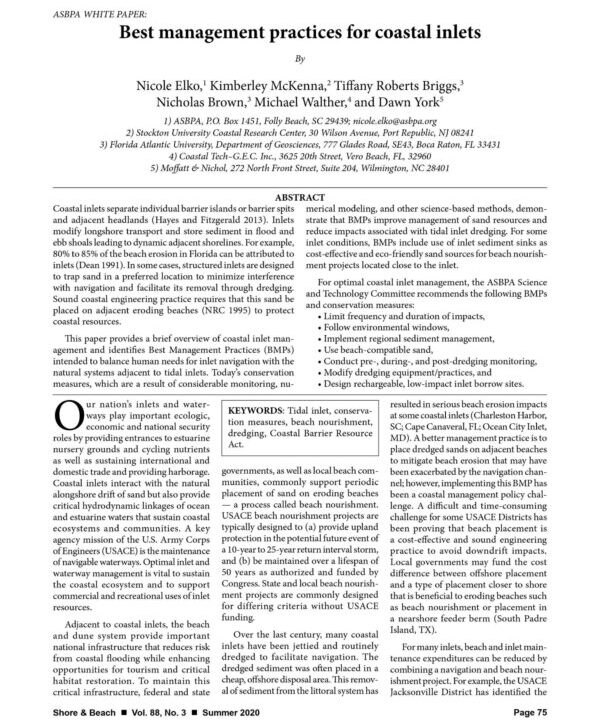Abstract or Summary

Coastal inlets separate individual barrier islands or barrier spits and adjacent headlands (Hayes and Fitzgerald 2013). Inlets modify longshore transport and store sediment in flood and ebb shoals leading to dynamic adjacent shorelines. For example, 80% to 85% of the beach erosion in Florida can be attributed to inlets (Dean 1991). In some cases, structured inlets are designed to trap sand in a preferred location to minimize interference with navigation and facilitate its removal through dredging. Sound coastal engineering practice requires that this sand be placed on adjacent eroding beaches (NRC 1995) to protect coastal resources. This paper provides a brief overview of coastal inlet management and identifies Best Management Practices (BMPs) intended to balance human needs for inlet navigation with the natural systems adjacent to tidal inlets. Today’s conservation measures, which are a result of considerable monitoring, numerical modeling, and other science-based methods, demonstrate that BMPs improve management of sand resources and reduce impacts associated with tidal inlet dredging. For some inlet conditions, BMPs include use of inlet sediment sinks as cost-effective and eco-friendly sand sources for beach nourishment projects located close to the inlet. For optimal coastal inlet management, the ASBPA Science and Technology Committee recommends the following BMPs and conservation measures: • Limit frequency and duration of impacts, • Follow environmental windows, • Implement regional sediment management, • Use beach-compatible sand, • Conduct pre-, during-, and post-dredging monitoring, • Modify dredging equipment/practices, and • Design rechargeable, low-impact inlet borrow sites.